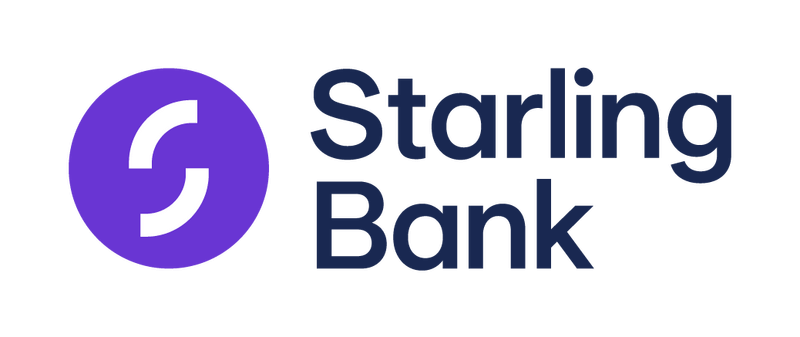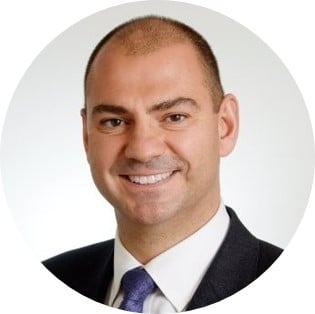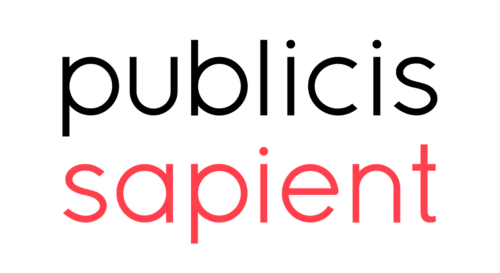ARTICLE
SME Banking: The Age of Open-Innovation

The COVID-19 crisis has exposed deep failings in the SME banking sector. With banks now being called upon to help support and revive this key section of the British economy, it’s time to embrace connected banking, enable rapid innovation and utilise data to assess and monitor credit worthiness and forge deeper and more profitable relationships with SME customers – or risk losing ground to innovators who can add real value to business owners in their time of need.


Tulika Maheshwari


Anna Mitchell


Jamie Broadbent


Jayne Wickins


Andrew Wright


Jan-Willem Weggemans
Open Banking, as a catalyst for innovation and change, may have under-whelmed over the last two years but it seems the digital reset triggered by the COVID-19 crisis and the growing acceptances of cloud-native banking has been a shot-in-the- arm. Will banks or challengers utilise the new opportunities for innovation and come to the rescue of the SME sector in its hour of need? That depends on what banks do next but one thing is clear: business-as-usual in SME banking is no longer an option.
Quite simply, SME banking is under pressure as never before as a result of customer distress and dissatisfaction. Already there are signals that businesses feel let down by their banking providers, with four in ten planning to change banking provider. This defection of customers could prove costly to banks as they seek to respond to the threat of digital start-ups and face ever diminishing margins in a post-pandemic world. “Of course, where some banks will lose customers, others will win” says Andrew Wright, Senior Client Partner at Publicis Sapient. “Those that can offer a great digital experience could find this a time of opportunity.”
Wright thinks the COVID-19 crisis has accelerated the inevitable digital reset in SME banking by “up to five or six years” but warns that innovation can’t stop there. “Everyone will have to raise their game.”
Jayne Wickins, Head of UK Banking at Microsoft, points out that the sudden burst of digital effort in the SME sector has simply helped close the gap with personal banking rather than offering anything new. “SME banking is a very underserved market and there’s still not enough differentiation,” she says.
That’s the real win with Open Banking – the unprecedented level of interoperability and the access to new data, which will drive new opportunities, new capabilities and new partnerships
Open-innovation opportunities
That may be about to change. Open Banking has been a slow burn across the industry, but industry watchers believe Open Banking, in combination with widespread use of API-enabled connectiveness, may now be key to shaping the next generationof experiences and services. “The Covid-19 crisis has exposed points of friction and bottlenecks in the SME banking experience and that’s where Open Banking can really help by enabling solutions that make life simpler, smarter and easier,” says Tulika Maheshwari, Global Head of Business Banking Propositions for HSBC, who recently launched Kinetic, a new mobile-first business banking proposition.
Many of these solutions will result from tie-ups with thirdparty providers. “That’s the real win with Open Banking – the unprecedented level of interoperability and the access to new data, which will drive new opportunities, new capabilities and new partnerships,” says Jayne Wickins of Microsoft.
Indeed, Jan-Willem Weggemans, Senior Client & Alliance Partner, Financial Services for Publicis Sapient says he likes to use the term “Open Innovation”. “That’s what Open Banking is really about,” he says. “It’s taking that interoperability to innovate on behalf of the customer, giving them access to enhanced functionality and smarter data-rich solutions that make life better. And often that will mean the bank stepping aside and letting other parties take the lead where it benefits the customer to do so.”
Open to Challenge
There hasn’t been much evidence of this Open Innovation in SME banking to date. That doesn’t mean there isn’t innovation underway elsewhere, whether it’s the reinvention of the business bank account from the likes of Starling and Tide or new, super-fast credit assessment models from Funding Circle and iWoca. “These companies have leveraged a cloud-native, digital-first and API-led approach to innovate on behalf of customers and rapidly scale new propositions,” says Andrew Wright of Publicis Sapient.
This explosion of innovation has been in stark contrast to large incumbent banks, many of which, Wright says, have struggled to get the technology right to allow data sharing through APIs and have been slow to communicate the benefits of Open Banking in an impactful and meaningful way.
While incumbents are still finding their feet, challengers are starting to gain traction with their Open Banking offers.
“Starling was designed with Open Banking in mind right from the outset so we’re already in a different position from the rest of the industry,” says Anna Mitchell, Head of Marketplace at Starling Bank. “We go above and beyond the minimum spec because we’ve always seen Open Banking as a real opportunity to enhance our overall proposition.”
Adding value through integration
Starling’s Business Marketplace allows customers to browse and link third-party products and services to their bank account, with a view to taking the legwork out of the running of a business, whether it’s linking the bank account directly to accountancy software or finding the best deals on energy.
You can be the best bank in the industry, but if it’s not easy to connect with other services then how helpful is it really?
There appears to be an appetite for this one-stop-shop suite of business services, with Mitchell reporting that a third of Starling’s business customers have at least one integration into the Marketplace – “much higher than among personal customers” – with 10,000 signing up to integrate with accountancy software QuickBooks in just six months.
Incumbents recognise there’s a gap in the SME banking market for this kind of integration with the many services that are the hidden but often time-consuming plumbing of business life, from taxes and insurance to energy bills and staff pensions. Starling’s business customers can switch to better energy deals via Bionic, get rid of paper receipts and manage loyalty programmes via Flux while freelancers can use UnderPinned to build portfolios and proposals, organise work and get paid on time. It’s not just neobanks. Barclays has launched a SmartBusiness Dashboard that connects up the bank account, QuickBooks, Xero and Paypal so business owners have all key data in one place.
“Running a business is hard, so anything that makes life easier by enabling seamless connections beyond banking is to be welcomed,” says Jamie Broadbent, Head of Digital and Innovation at RBS International. “You can be the best bank in the industry but if it’s not easy to connect with other services then how helpful is it really? This is a huge mind shift for banks, which have spent decades building walls around their castles and now find they need to climb down and connect with other providers if they’re to stay relevant.”
SMEs still cautious
It’s not just banks that will need to become comfortable with dismantling walls. Tulika Maheshwari of HSBC points out that customers have been schooled to never share their banking data for fear of cybercrime, a lesson proving hard to unlearn. This caution has only deepened during the COVID-19 crisis, with investigators reporting a surge in coronavirus-related scams and cyberattacks since March. Businesses are also wary that if they share data with their bank then it will be used for marketing or held against them for decisioning.
Banks will need to engage with customers and provide clear reassurance about security and privacy. This must go hand-in-hand with the creation of compelling propositions that add value to the business owner, whether it’s faster approvals on loans, better rates on FX or smarter budgeting, and a recalibration of the banking relationship. For many SMEs, the business bank account is a purely functional product and the relationship with the bank is completely transactional. Smarter use of data has created the potential to build a new kind of relationship, where there’s mutual trust and customers earn real value for sharing data with their bank.
“Small business owners tend to be very hesitant to show their bank anything but the best information,” explains Jayne Wickins of Microsoft. “It’s a them-v-us type relationship, so trust needs to be rebuilt and the banks need to make it clear what businesses will get in return for sharing their data. And the whole process needs to be transparent so that businesses know what their data is being used for and how it will be used to make decisions.”
Data innovation: understanding, experience and credit decisioning
Once banks have access to richer datasets, they will be able to generate new insights into their SME client base. “It’s a very diverse segment with widely differing needs, and understanding this will be critical,” says Jan-Willem Weggemans of Publicis Sapient. “There will also be a gigantic task for banks over the next six to twelve months arising from the sheer volumes of loans issued that will not have been tested against existing credit models. The pandemic has not only placed unexpected stresses on previously-booming businesses but has unleashed a tide of Government-backed lending, which has rendered many credit models unworkable. Given the high proportion of SME companies that are considered high risk, access to relevant, recent/real-time and rich data will be critical.”
“Data isn’t just a COVID-19 survival issue for banks”, according to Jamie Broadbent of RBS. “There was already a need for richer and wider data sources because business-as-usual models had been disrupted by surging digitisation, changing customer behaviours and unstoppable demographic forces.”
“Banks are going to have to reinvent how they make credit decisions because our economy is changing, with more people working in the gig economy, having side hustles and a lifestyle approach to business with peaks and troughs in income,” says Broadbent. “Data from new sources will be key, with social media presence and sentiment analysis increasingly emerging as the metrics of the future.”
Tulika Maheshwari of HSBC agrees that more innovation will be needed to build pictures of creditworthiness in an uncertain world. “We need to get better at using data and putting intelligence around it to really understand what’s going on,” she says.
With the right data and the right tools, banks can begin to build a better understanding of the real dynamics of a business, from cashflow modelling to supply chain vulnerabilities. “Even in challenging times, there are successful companies in every segment – it’s having access to the data to drill down and work out what’s really happening, whether that’s access to web traffic statistics, sentiment analysis of social media postings or weather reports,” says Jayne Wickins of Microsoft.
So many business decisions are made before the bank is involved. Rather than being the last to know, banks need to get involved earlier in the life cycle.
Data-driven propositions
With that deeper understanding, it will be possible to configure new propositions to help small businesses navigate troubled waters or capture new opportunities. “So many business decisions, whether it’s negotiating a new contract or seeking new premises, are made before the bank is involved. Rather than being the last to know, banks need to think more about how to get involved earlier in the life cycle – and that comes back to trust,” says Jayne Wickins.
Jan-Willem Weggemans of Publicis Sapient agrees, saying banks are missing out on so many opportunities because there’s a data-disconnect from the day-to-day life of the companies that bank with them. “As a small business owner, you want
your bank coming to you proactively wherever you are in your business – if you’re expanding or trying to finance a piece of new machinery, for example – and for that intervention to be as close to real time as it can be,” he says. “There’s so much data that could deliver useful insights: shipping data, weather data, filings from PLCs, social media sentiment analysis. How could these peripheral events impact this SME? It’s looking at the SME not as a single entity but as part of a wider business ecosystem.”
For many small companies, cashflow shortfalls are the biggest headache. There’s so much that could be done here to help them navigate these choppy waters and tap new sources of funding. AI-powered tools that pull in real-time data can model cashflow and anticipate shortfalls, enabling business owners to make smarter decisions and banks to reach out with proactive offers and help when it really matters.
Margin Pressure
As the fall-out from the COVID-19 crisis begins to ripple out into the wider economy, none will be immune, and that includes the banks themselves. Incumbents have been feeding off meagre margins for some time; now the pressure to develop higher margin propositions and reduce the cost to serve is more intense than ever.
These pressures are also being felt among the challenger banks, despite their lower overhead. “We were already following a
cost reduction strategy and COVID-19 has accelerated this,” says Anna Mitchell of Starling Bank, which is using technology to reduce cost-to-serve by improving onboarding and self-serve options. “Hitting breakeven is a real goal for us to be sustainable.”
Platforms and ecosystems – curating or orchestrating
Costs can only be squeezed so far, however, particularly for incumbents with higher overheads and a legacy of multiple channels to maintain. “Margin depression means there’s a pressing need to find new income streams,” says Tulika Maheshwari of HSBC, who thinks that the emergence of digital platforms and ecosystems could yield higher margin ground for some players.
It’s an opportunity to look at the whole ecosystem and what small businesses need to succeed beyond banking – legal services, supply chain, accounting, insurance, energy and sustainability – with the bank sitting in the middle as a kitemark of quality and a conduit of convenience.
Curation is easier and is where we’re seeing more activity now. But orchestration will create a deeper partnership with the customer and will be where there’ll be more margin and opportunity.
Tulika Maheshwari thinks banks could act either as curators, pulling together an experience that the customer exits to engage with another interface to complete a transaction, or as orchestrators, building an end-to-end ecosystem, which is much more closely integrated and where all activity is conducted within the orchestrated platform.
“Curation is easier and is where we’re seeing more activity now,” says Maheshwari. “But orchestration will create a deeper partnership with the customer and will be where there’ll be more margin and opportunity.”
She stresses this is still very early days. “It’s test-and-learn mode and it’s still too early to tell if there’s a viable financial model to be found.”
This is echoed by Jan-Willem Weggemans of Publicis Sapient. “We have yet to see how the economics will stack up but, in the short term, if you are not in it, you will not win it,” he notes.
Starling Bank, of course, was designed to be an ecosystem- ready from the get-go and Anna Mitchell takes the view that the economics will work if the integrations are well thought through. “We work out where the pain points are for SMEs and make sure our integrations are very much focused on solving real customer problems,” she says. “Unless your solution solves a real customer problem and they will pay for it, you will not build a sustainable business.”
For many banks considering the platform-based future, those economics remain hazy. There are a number of potential models: a commission-based model for third-parties? Charging third-parties for access to premium APIs? Or perhaps a subscription-based model, where SMEs are willing to pay a monthly or quarterly fee for access to value-added banking services?
Consolidation looms but the winning model remains unclear
One thing is clear: the onward march of digitisation across all sectors has seen the emergence of a small number of dominant players, with the also-rans scrabbling for margin in an increasingly commoditised marketplace. “Everything will be different in five years’ time,” predicts Jayne Wickins of Microsoft. “There will be a few big winners and a lot of consolidation in the marketplace.”
Jamie Broadbent of RBS agrees that consolidation lies ahead.
“The question is what’s the model going to be? Could we shift to subscription-type services?” he asks. “Banks are starting this transition but probably not fast enough. As in any industry, the ones that succeed will be those that are most adaptable to change and move early.”
It’s a tall order, concludes Jayne Wickins of Microsoft. “Banks only have so much bandwidth and right now they are being forced to consider a complete overhaul of tried and tested banking models as well as digitising operations, cutting costs and serving a customer base that faces unprecedented disruption as a result of a once-in-hundred-year pandemic. Those that solve the technology part of the equation by embracing cloud and smart automation to free up capacity will then have more time to focus where it counts – on the customer.”
Jan-Willem Weggemans of Publicis Sapient agrees, pointing out by leveraging Open Innovation banks will be able to reframe the SME banking relationship and put their weight behind this key sector. He says this has never been more important.
“Banks need to stand shoulder to shoulder with the businesses they serve so that SMEs can focus on business outcomes benefitting to the whole economy.”
MoneyLIVE is your one-stop shop for all the lastest banking and financial services content from across the world. With a huge portfolio of conferences, webinars, executive roundtables and reports to choose from, MoneyLIVE provides our community with relevant and future-facing information.
Visit the website: moneylive-insights.com
Publicis Sapient is a digital transformation partner helping established organizations get digitally enabled, both in the way they work and the way they serve their customers. We help unlock value through a start-up mindset and modern methods, fusing strategy, consulting and customer experience with agile engineering and problem-solving creativity.
As digital pioneers for over 30 years with 20,000 people and 53 offices around the globe, our experience spanning technology, data sciences, consulting and customer obsession – combined with our culture of curiosity and relentlessness – enables us to accelerate our clients’ businesses through designing the products and services their customers truly value. Publicis Sapient is the digital business transformation hub of Publicis Groupe. Visit: publicissapient.com
Microsoft (Nasdaq “MSFT” @microsoft) enables digital transformation for the era of an intelligent cloud and an intelligent edge. Its mission is to empower every person and every organization on the planet to achieve more. Visit: microsoft.com/
Stay in the loop with MoneyLIVE
Subscribe to our newsletter to receive news, insights and special offers.
By submitting this form you agree to our Privacy & Cookies Policy and Terms & Conditions